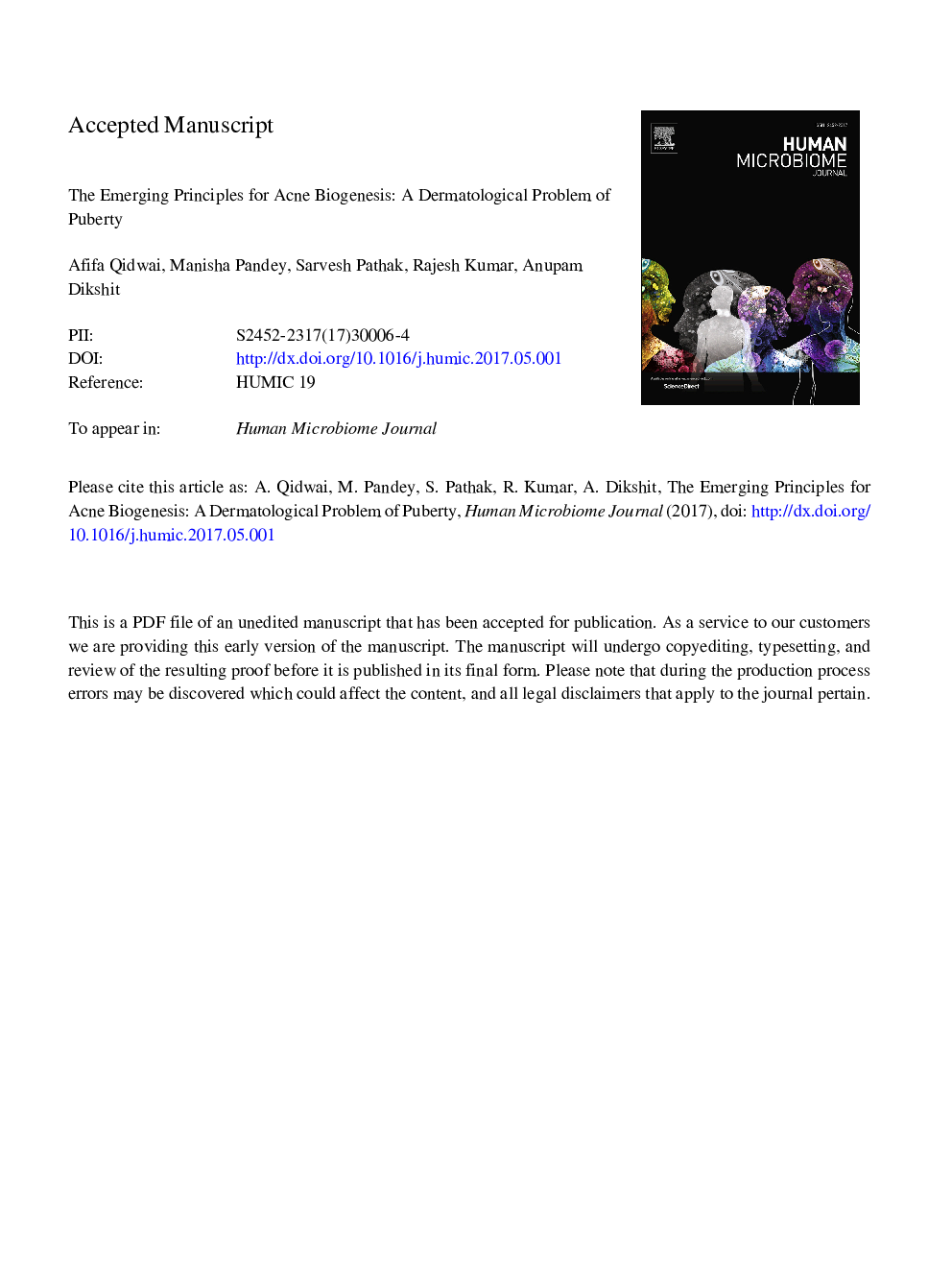| Article ID | Journal | Published Year | Pages | File Type |
|---|---|---|---|---|
| 5672155 | Human Microbiome Journal | 2017 | 14 Pages |
Abstract
Acne is the most common conditional skin infection in late adolescence. It has long played the part of 'Black Spot' against Natural Beauty, characterized by non-inflammatory pilosebaceous lesions of open or closed comedons, and inflammatory lesions of papules, pustules and nodules. It is typically affected the face, neck, and upper trunk area, where sebaceous follicles is densest in population, however prevalence is about 90% in teenagers. Recent advances have been made in this area with the discovery of Propionibacterium acnes interaction with Toll-Like Receptors (TLRs) and free fatty acid that initiates linoleic deficiency, also the role of linoleic acid and PPARs (peroxisome proliferators-activated receptors) in inflammation. However multi-drug resistant of bacteria by biofilm formation is also a matter of concern, that render the course of treatment ineffective. With all relevant literature database search upto recent this review focuses on pathogenesis of acne and mechanisms involved in the development of inflammation.
Related Topics
Life Sciences
Immunology and Microbiology
Microbiology
Authors
Afifa Qidwai, Manisha Pandey, Sarvesh Pathak, Rajesh Kumar, Anupam Dikshit,
